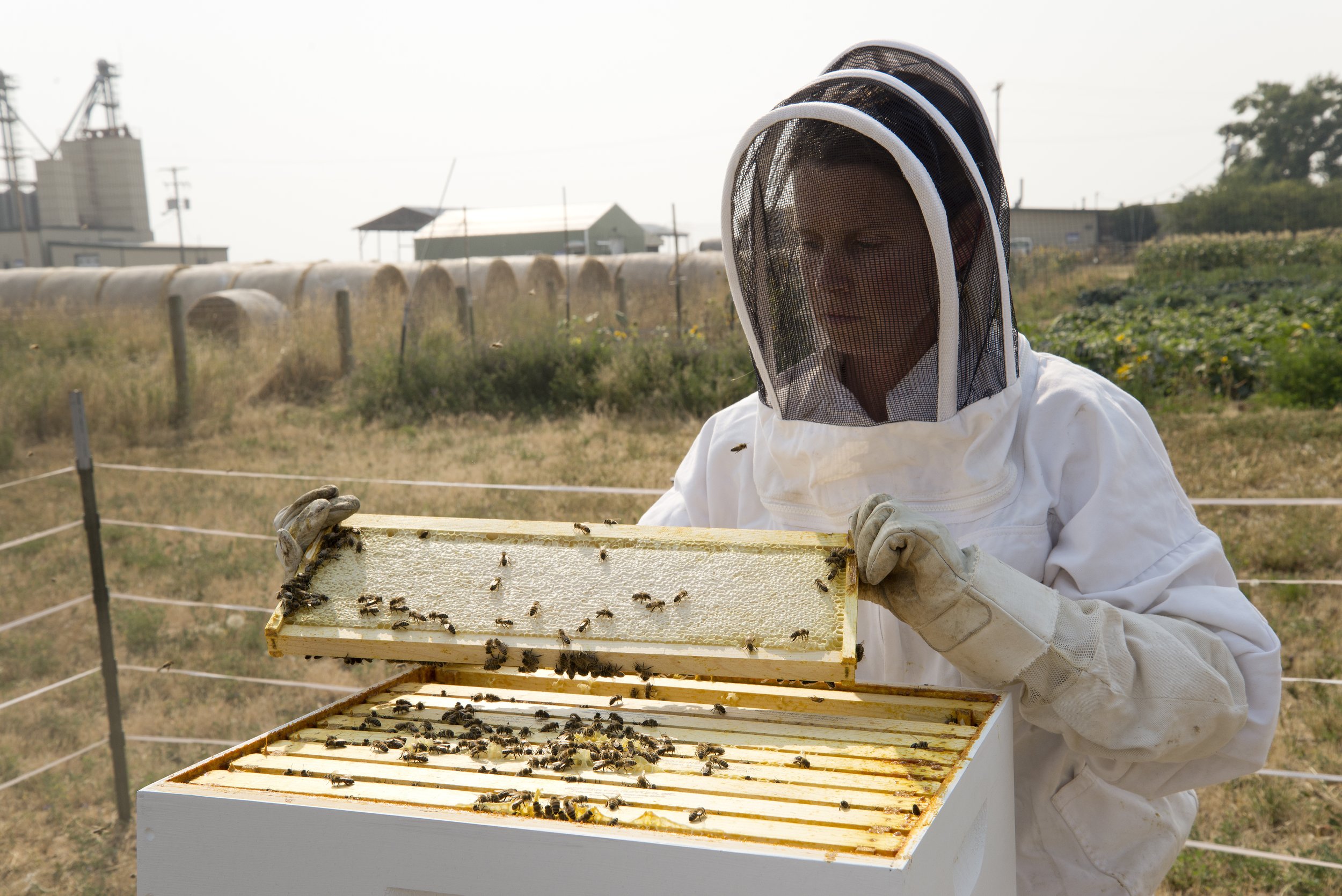
Goldwert. The Collapse of an Indicator Species
If the bee disappears from the surface of the earth, man would have no more than four years to live.
- Albert Einstein
Goldwert. The Collapse of an Indicator Species addresses the current issue of Colony Collapse Disorder of honeybees and questions how we assign, or fail to assign, value to nature. It addresses the threat that bees, and we, as a result thereof, are facing and communicates the importance of bees in the agricultural and urban environment. As an indicator species, bees are not only a direct measure of the health of ecosystems: their current condition acts as a metaphor for our own society, demonstrating our fallibility in the way we think about and employ resources.
Since 2006 Colony Collapse Disorder (CCD) of honey bees has been occurring throughout the world. Large quantities of bee colonies suddenly started dying each year under mysterious circumstances from unknown causes. CCD is especially of concern, considering how crucial honeybees are in food production, which becomes evident by the existence of an enormous honey bee industry. Honey bees pollinate dozens of popular crops. For almond pollination alone, 900,000 hives are transported to the Central Valley in California every year. Queen bees bred by humans on large bee farms ensure regeneration.
This body of work contains several storylines, which thematically and geographically address various components involved, such as the economy, industry, tradition, mystery, and ecology of honey bees, as well as the specific roles bees play in the agricultural environment. The images include small-scale beekeepers in the San Francisco Bay Area and Montana, Almond pollination in the Central Valley of California, as well as metaphorical imagery of gold-coated bees and crops.
The series includes images of a rooftop beekeeper in Berlin, Germany, who is part of a growing movement of urban beekeeping in cities around the world. She placed her hives on top of an old power plant in Berlin’s Kreuzberg neighborhood. The building, with its barely illuminated labyrinth-like structure, is also home to a nightclub housing some of Berlin’s everlasting dance parties. The beekeeper describes the roof as a desert: once you exit onto the expansive, black, flat roof it is as if you have left Berlin. Only the distant view of the Berliner Dom and Alexanderplatz TV tower reminds of the existence of Germany’s capital. Once summer comes, harsh winds subside, and Berlin explodes in a parade of blossoms, these bees will be contributing to the health of an ecosystem in the center of one of Germany’s most urban areas, nurtured by parks and plants far away from industrial agriculture and pesticides.

The series includes images of a rooftop beekeeper in Berlin, Germany, who is part of a growing movement of urban beekeeping in cities around the world. She placed her hives on top of an old power plant in Berlin’s Kreuzberg neighborhood. The building, with its barely illuminated labyrinth-like structure, is also home to a nightclub housing some of Berlin’s everlasting dance parties. The beekeeper describes the roof as a desert: once you exit onto the expansive, black, flat roof it is as if you have left Berlin. Only the distant view of the Berliner Dom and Alexanderplatz TV tower reminds of the existence of Germany’s capital. Once summer comes, harsh winds subside, and Berlin explodes in a parade of blossoms, these bees will be contributing to the health of an ecosystem in the center of one of Germany’s most urban areas, nurtured by parks and plants far away from industrial agriculture and pesticides.
Photographer Marie-Luise Klotz


